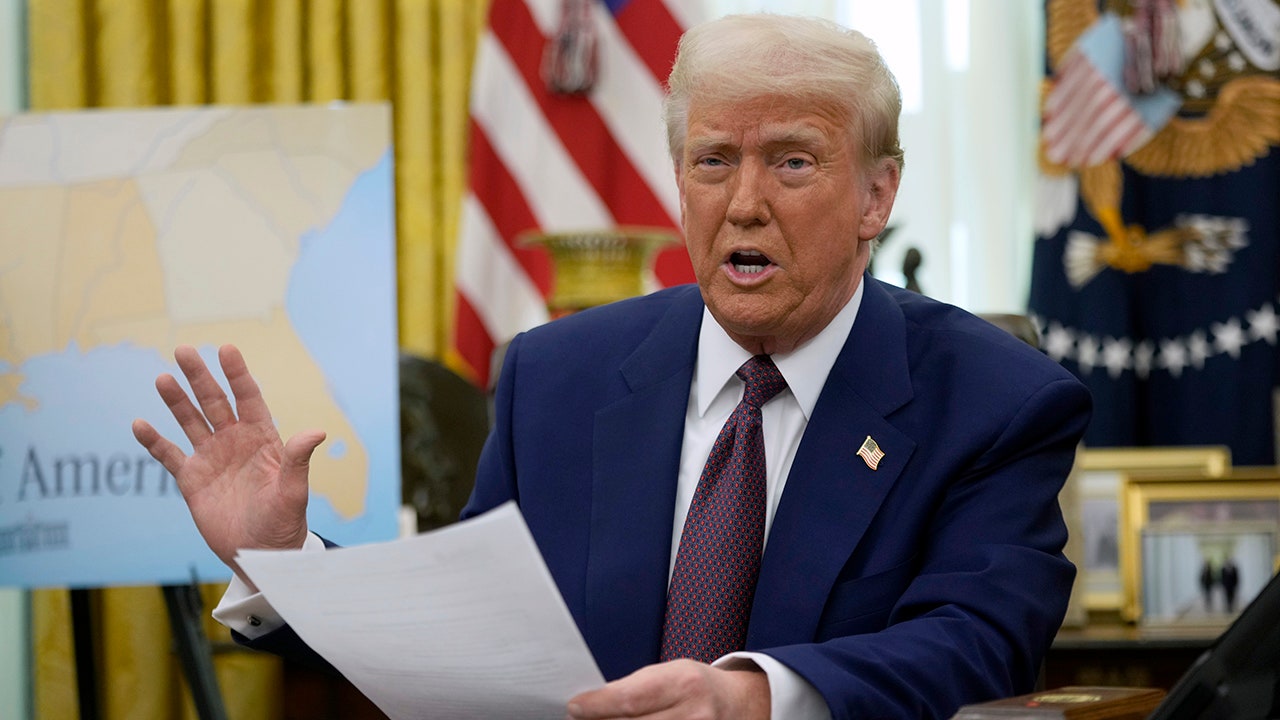Politics
Trump details his reciprocal tariff plans, asks foreign countries to ‘treat us fairly’: ‘Deliver RECIPROCITY’

President Trump’s Vision for Fair Trade: A Detailed Plan for Reciprocal Tariffs
President Donald Trump recently outlined his ambitious plan to overhaul U.S. trade policy, emphasizing the importance of fairness and reciprocity in international trade. In a detailed post on Truth Social, Trump explained how his administration intends to implement reciprocal tariffs on countries that impose unfair trade practices on the United States. The goal, according to Trump, is to create a level playing field for American businesses and workers. This policy shift comes after weeks of announcing new tariffs on imports from key trading partners, including China, Canada, and Mexico. Trump’s approach aims to address what he describes as systemic inequalities in global trade that have historically disadvantaged the U.S.
How Reciprocal Tariffs Will Work
At the heart of Trump’s trade policy is the concept of reciprocity. The president explained that under this system, the U.S. will impose tariffs on foreign goods at rates equivalent to those levied by other countries on American exports. For example, if a country charges a 25% tariff on U.S.-made steel, the U.S. will reciprocate by imposing a 25% tariff on that country’s steel imports. Trump also highlighted the role of value-added taxes (VATs), which many countries use to tax imported goods. He argued that VATs are often more punitive than tariffs and should be treated similarly in the context of U.S. trade policy. "Countries that use the VAT system will be considered similar to those that impose tariffs," Trump wrote, ensuring that the U.S. does not face disproportionate trade barriers.
Addressing Non-Tariff Barriers and Subsidies
In addition to reciprocal tariffs, Trump’s plan also targets non-tariff barriers and subsidies that unfairly advantage foreign competitors. Many countries use non-monetary trade barriers, such as strict regulatory requirements or limits on market access, to keep American products out of their markets. Trump emphasized that these barriers will be accurately assessed and addressed under the new policy. "We are able to determine the cost of these non-monetary trade barriers," he noted, ensuring that the U.S. will not tolerate unfair practices. Similarly, Trump pledged to address subsidies provided by foreign governments to their industries, which often give them an unfair advantage over American businesses.
Incentivizing Manufacturing in the U.S.
A key aspect of Trump’s trade strategy is to incentivize foreign companies to manufacture their products in the United States. The president made it clear that companies that build factories or plants on American soil will face no tariffs on their products. "If you build here, you have no tariffs whatsoever," Trump said during a recent address from the Oval Office. He believes this policy will lead to a surge in domestic job creation, as foreign businesses relocate to the U.S. to avoid tariff penalties. Trump predicted that the country will be "flooded with jobs" as companies in industries ranging from automotive to semiconductors choose to establish operations in the U.S.
A Call for Fairness and Prosperity
Trump framed his trade policy as a necessary step to restore fairness to a system he believes has long exploited the United States. "America has helped many countries throughout the years, at great financial cost," he wrote. "It is now time that these countries remember this and treat us fairly." The president argued that the current global trade system is complex and unfair, favoring foreign nations at the expense of American workers. By implementing reciprocal tariffs and addressing non-tariff barriers, Trump aims to create a more equitable system that benefits U.S. industries and employees. He instructed his Secretary of State, Secretary of Commerce, Secretary of the Treasury, and the U.S. Trade Representative to work aggressively to deliver reciprocity in trade.
The Promise of a Level Playing Field
Trump’s vision for fair trade is rooted in the belief that American workers deserve a level playing field in the global economy. He criticized previous trade policies for allowing foreign countries to take advantage of the U.S., often through unfair tariffs and subsidies. By implementing reciprocal measures, Trump hopes to reverse this trend and ensure that American businesses can compete on equal terms. While critics have expressed concerns about the potential impact of tariffs on global trade relations, Trump remains confident that his approach will lead to long-term prosperity for the U.S. As he concluded, "This system will immediately bring fairness and prosperity back into the previously complex and unfair system of trade."


















